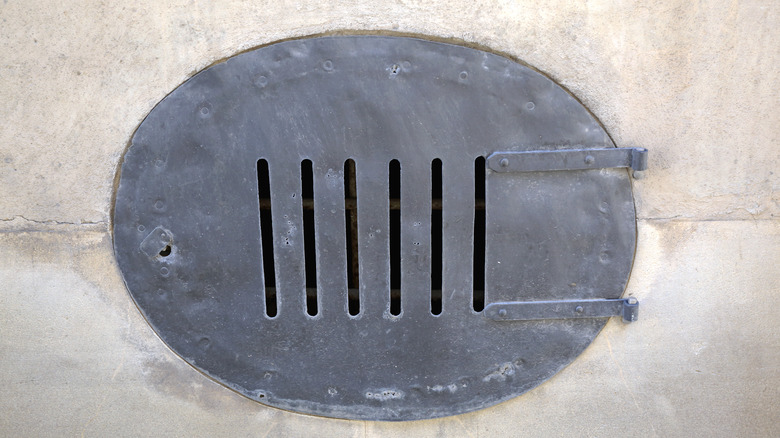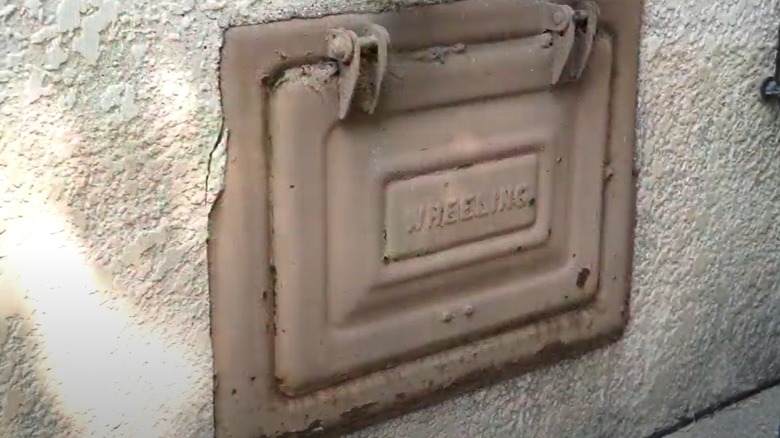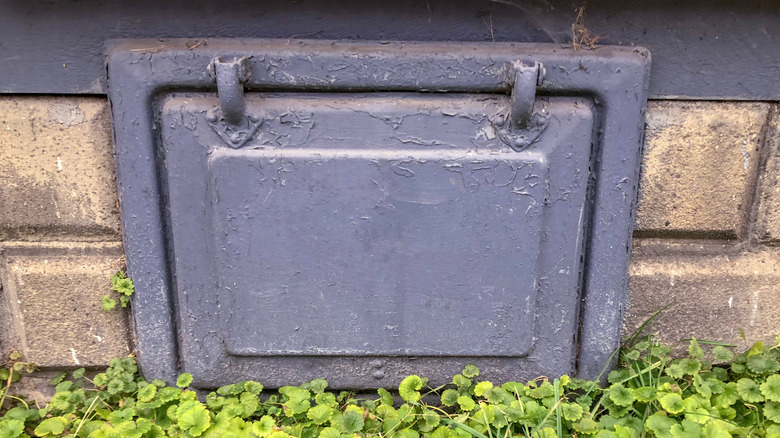What It Means If You See A Tiny Door On The Side Of Someone's Home
If you're a fan of "The Hobbit" or "The Lord of the Rings," you know all about the adorable tiny doors that hobbits use to exit and enter their holes. Fans can find collectibles that feature them, and you even can stay in an Airbnb that looks like a hobbit hole. However, you wouldn't expect to find a similar-sized door on the side of a home in the real world — or would you? Some homes, especially vintage houses, do have tiny doors on the exterior of them. What exactly is the purpose of this curious vintage home feature?
Multiple explanations are possible, but the majority of these doors had some sort of important, functional role several decades ago, even if they're just decorative these days. The most likely explanation is that the tiny door was made for some sort of delivery to the house. Perhaps at one time the house had a coal-fired furnace in the basement. The tiny door may have led to a chute to move the coal to the basement, rather than lugging this heavy, messy fuel through the rest of the house and tracking coal dust everywhere. Other potential explanations include having a tiny door with a compartment for milk, butter, or ice deliveries. Placing these items inside a tiny compartment kept them out of the sun until the homeowner could retrieve them. Refrigerators became common in homes during the 1930s, so regular deliveries of these items were vital before that time.
How do I know exactly what the tiny door on my house was used for?
If you see this type of tiny door on the side of your home, you may be curious what its purpose was in the past. You also may wonder if you can figure out a way to use it for something nowadays. Identifying the door's original purpose can be a bit of a chore, but it's not impossible. There are some clues you can use.
If it's a coal chute, it likely has a steel door that's near the ground. Having the door close to the ground made it easier to move the heavy coal from the truck down the chute and into the bin in the basement. Trucks often would deliver tons of coal each day to homes and businesses, so efficiency was important. For milk, butter, and ice delivery, a wood door was more likely to be at chest height. This height made it easier to move items in and out, versus having to bend over to pick up the groceries.
In a newer home, you may notice a tiny door underneath a porch or deck. This could lead to a small storage area where you can keep items that you use for landscaping. The use of a door makes it easier to lock the area and to protect your stored items.
What can I do with a tiny exterior door on my older home?
If you're doing some remodeling on the exterior of your house, you may consider making some changes to the area with the tiny door. Should you remove it? Or can you repurpose it? If you can still open a milk or ice delivery door and the interior compartment is functional, you might be able to use it for online deliveries when you aren't home to keep the packages off your porch. However, someone may have removed the interior compartment when they were remodeling the inside of the home, which would make the door non-functional and purely decorative.
Many older homes may still have a coal delivery door on the exterior. This is an especially common feature on Victorian-era homes. However, the actual chute and coal bin are likely long gone because of previous interior renovations. You could still keep the door in place but clean it up and paint it to make it a focal point. If you keep the coal chute door as a quirky eye-catching piece on the exterior, seal it properly to prevent moisture and air leakage. You could use clear, weather-resistant caulk on the exterior (about $10 at Home Depot) so you don't detract from the look. You may also want to cover the interior of the chute door with spray foam insulation (also about $10 at Home Depot).



